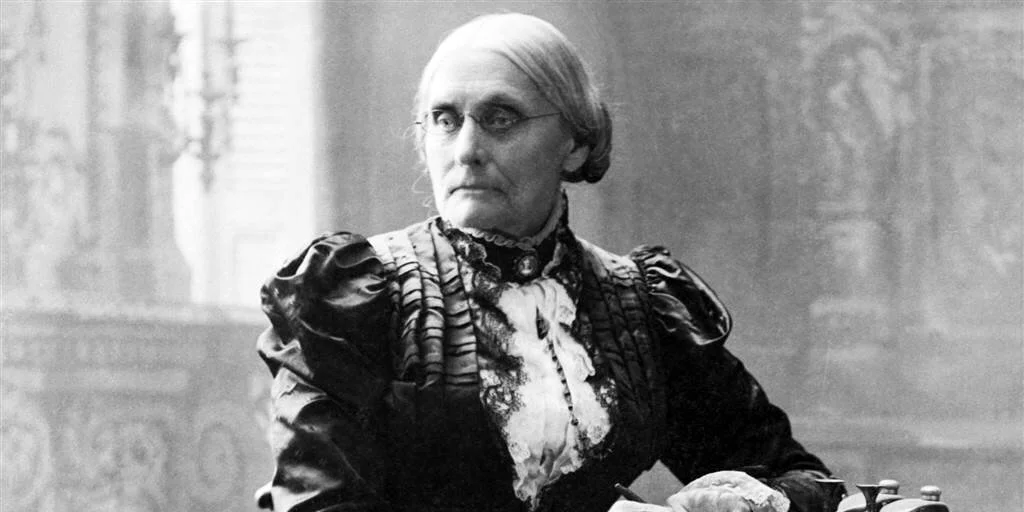On centennial of Women's right to vote, TD woman remembered for her role in ratification
A political cartoon lampooning Rep. Sylvia Thompson, The Dalles, and Sen. Bert Farrell, Multnomah County, ran in newspapers in January 1920 when women’s right to vote was ratified in Oregon. it was the 19th amendment to US Constitution and it became federal law 100 years ago today, Aug. 26, 1920.
By Karl Vercouteren
A woman from The Dalles had a large part in securing the right of women to vote. The 19th Amendment was ratified and became law of the land August 26, 1920. Oregon’s legislature ratified the Amendment in January, 1920, and the resolution was introduced by Sylvia Thompson.
Sylvia won her first term as representative of Wasco and Hood River Counties in 1916. She would go on to serve three terms, but the highlight of her political career happened that day in 1920 when she moved to adopt women’s suffrage. Her story is part of an interactive map that features people and events throughout America that led up to the 19th Amendment.
Janice Dilg who is coordinating the statewide observance of the centennial of women’s voting rights, presented a program at the Original Wasco County Courthouse in February. She challenged local historians to come up with people and events to put on the map of the National Vote for Women Trail.
People from the Original Courthouse, Wasco County Historical Society, Discovery Center, and Fort Dalles Museum were interested. Eventually Karl Vercouteren proposed some local sites to the Oregon coordinating group and began research of local and area people and events in the suffrage movement. He shares credit with people from all of the historical groups who helped: Mary Davis, Jan Leininger, Denice Bokum, Susan Buce, and others.
The national Votes for Women Trail website can be accessed at https://ncwhs.org/votes-for-women-trail-2/ and the map allows zooming in on the local area. A click on a circle opens a box with information about that location.
The National Votes for Women Trail website provides an interactive map that shows the struggle through political action to gain the right to vote for women. Go to: http://ncwhs.org/votes-for-women-trail/#trail
Susan B. Anthony and Abigail Scott Duniway gave speeches pushing for women’s right to vote in 1871 at the Umatilla House in The Dalles. The hotel once stood near the Union Street underpass.
The oldest of the local sites is the Umatilla House, where national suffrage leader Susan B. Anthony and Oregon’s leader Abigail Scott Duniway addressed a crowd of 100 in 1871. Anthony and other national leaders feature in another site: the old OR&N Passenger Station at First and Madison Streets. They were met there in 1905 by Duniway and other Oregon suffragists for the final leg of their journey to Portland for the national suffrage convention.
Abigail Scott Duniway, considered Oregon’s Mother of Suffrage
Most of the local sites have to do with the successful campaign for voting rights in Oregon in 1912. They include site of Elizabeth Lord’s house. She was a Sorosis Club leader active in local and state suffrage groups. Also the site of Knights of Pythias Hall where Oregon State Federation of Labor met and endorsed suffrage, the old fairgrounds where College Equal Suffrage League members encouraged fairgoers to support women’s franchise, Fort Dalles Museum where 150 teachers from Sherman and Wasco Counties listened to a suffrage speech, and the Vogt Opera House where the former U of O president, now associate editor of the Oregonian, was invited to speak on the eve of the election.
College Equal Suffrage League members encouraged fairgoers at the Dalles Fair and Rodeo grounds to support women’s right to vote.
Susan B. Anthony
Other sites on the map are in Mosier, Hood River, Heppner, and the fairgrounds in Condon and Prineville— all locations where talks were given and where electioneering took place.
Sylvia Thompson gets the nod on two other local sites: her home at 610 Court Street and Hotel Dalles where she addressed the Sorosis Club in 1916, four years after the Oregon vote and four years before the national amendment. Her message: “Universal woman suffrage is bound to come: the tide is restless and the sooner it comes the better for humanity.”






